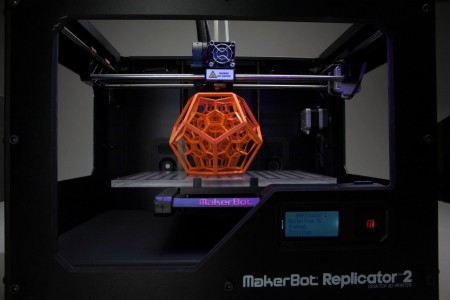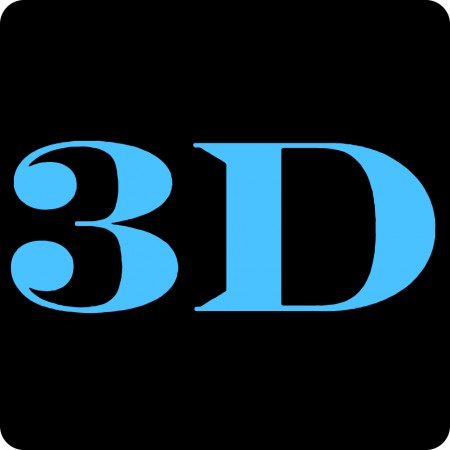March 7, 2016 – Continuing our series on significant emerging technologies in which Peter Diamandis explores the disruptive drivers changing the 21st century, we hear the thoughts and opinions of Avi Reichental, founder and CEO of XponentialWorks, describing the current and near future state of 3D printing. 3D printing has been featured in a number of postings at this site and I encourage you to use the search features available to look at what has already been described.
If you are unfamiliar with the technology here is some quick background. 3D printing is also known as additive manufacturing.
The printing process uses a three-dimensional digital file and translates it to a printer that creates the object by printing layer on layer. 3D printers use one or more print heads extruding small amounts of material in precise locations to build three-dimensional objects point by point from the bottom up. 3D printing today is capable of rendering objects in full color using more than 250 different materials including titanium, rubber, plastic, glass, ceramic, leather and even chocolate. 3D printers combine materials to create very complex structures. They are used to print jet engines, rocket bells, jewelry, toys, houses, medical prostheses and even biological organs. The technology is transforming manufacturing from mass production to mass customization. Manufacturers see 3D printing as a significant cost saver requiring as little as 10% of the raw materials expended in traditional manufacturing and eliminating the need for inventory.
But now let’s hear what Mr. Reichental sees as the latest and near future breakthroughs for 3D printing.
———-
Top 5 Recent 3D printing Breakthroughs: 2013 to 2015
1. 3D printing in full color with 250+ different materials and composites.
Reichental explains, “We can now print in full color, which means more than a million different color combinations in a single print. We can also print in 250 different materials. This has never been possible, and with the ability to print many, many new materials and combinations thereof, the creative opportunities are almost limitless.”
2. Customized mass production of 3D printed medical devices.
“We’ve seen a rise in the number of bespoke customized medical devices and parts. Not only are key ‘implants’ like full knee and hip replacement parts customized to you, but the surgical instruments, the jigs, the fixtures, the incision tools, etc. are 3D printed to fit you. One example is hearing aids. These devices, each of which fits into a uniquely shaped ear canal, have been 3D printed for nearly eight years.”
3. Explosion of metal 3D printers in aerospace and automotive industries ushers in an era of ‘mass complexity.’
Today, we have the ability to print with more than 20 different alloys. Companies like GE and SpaceX are 3D printing jet and rocket engines. My company Planetary Resources 3D prints parts of our ARKYD satellites. This capability unlocks billions of dollars in industrial applications for 3D printing.
4. High-speed 3D printing drives manufacturing at a convincing scale.
Speed is a big deal in 3D printing. If it took two days to print a small object, consumers would never adopt the technology. If it took just two minutes, then everyone would need to have one. Reichental elaborates, “There have been tremendous improvements in speed. The prediction now is that speed is not just going to double every couple of years, but speed is probably going to go 10x, 50x, 100x in the next 5 years. There are quite a few successful companies out there that are demonstrating today that they can get to convincing scale with 3D printing that will be at least a hundred times faster than it is today.”
5. Democratization of the means and skills for everyone to create and make.
“Over the last few years, we’ve seen a very significant democratization of 3D printing technology,” states Reichental. “This democratization is about the systematic removal of all user friction in the 3D printing process, starting with complex CAD (Computer-Aided Design) and 3D modeling. The connectivity of devices and the cloud, the ability to search and download images, to have intelligent search engines that are searching three-dimensional models, the ability to price and share and source and print, etc. All of this represents the democratization that makes 3D printing accessible to the other 99 percent, not just to the designers.”
This is the user interface moment for 3D printing – when it’s easy enough and fun for everybody to use.
So what’s in store for the near future?
Top 5 Anticipated 3D Printing Breakthroughs: 2016 to 2018
1. Personalized nutrition made possible with new breed of 3D printers.
Personalized food and nutrition is about to get really exciting. As Reichental illustrates, “At the end of the day, your home food printer will create a personalized nutrition bar based on your needs in that moment, containing the amount of proteins, carbs, vitamins and supplements needed in that moment.”
Next, we’ll see 3D printing playing in the pharmaceuticals space, where your medical pill is printed (compounded and created) specifically for your needs that day.
2. Printed shoes and textiles disrupt fashion, apparel and retail industries.
Fashion is going to be disrupted in a big way. “Through the combination of scanning, digitizing, computing, sensing, active performance monitoring, and mixed materials, we will be able to print fully functional clothing and wearable devices.” Shoes will be tailor-made based on your posture, your stance, and your arch. Accessories will be custom designed and immediately printable. Everything will be perfectly designed to fit your body. You’ll be able to see a beautiful new dress designed in Paris that morning, buy it, and print it in your closet to wear that evening.
3. Printing of finished mixed-material devices (rubber, structure, wiring) – e.g. electronics, cars, houses…
“Today you can 3D print a toy truck with rubber tires, metal chassis, clear plastic or glass windshield in a single print. The next level of this is to print a fully functional device with circuits and sensors and logic.”
4. ‘Factory in a Box’ combines additive + subtractive manufacturing, delivering 100x speeds.
“CNC machining, additive layering, and even injection molding. It will all be unified into boxes that will become the factory of the future.”
5. 3D printing of human organs and tissues.
Researchers have convincingly demonstrated that simple organs and complex tissues can now be 3D printed. By harvesting our own stem cells, multiplying them, and then depositing them onto collagen scaffolding of the desired organ, these miraculous cells grow into a fully implantable, functional organ.
Reichental predicts, “In seven to 10 years, we will be in the business of replacing parts and organs that our bodies will not reject, and then perhaps we’ll have organs that were even better than the ones we were born with.”
At the same time, why not “print” a bio-sensor into your liver or heart to monitor its health and provide continuous data?

















